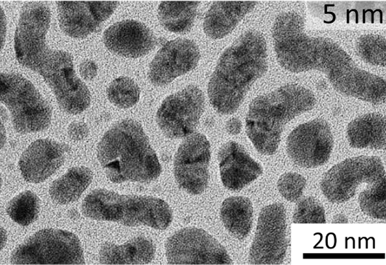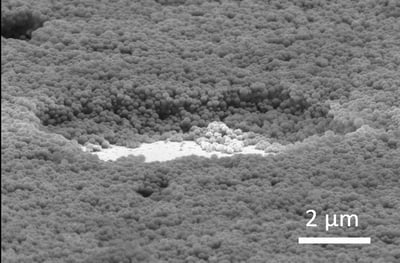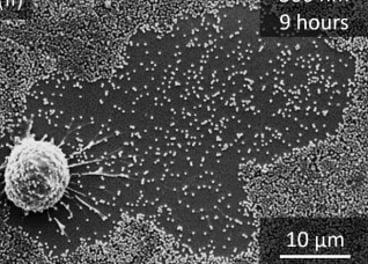Assembly and stability of particle-based coatings
I study the formation, mechanical stability, and functional properties of coatings composed of nanoparticles and microparticles. My research focuses on how these coatings interact with their environment, particularly in mechanical and biological contexts, and how their structure influences their durability and performance.
One major focus is on the mechanical stability of nanoparticle coatings under stress conditions. In a study published in Nano Letters, I examined how the size of silica nanoparticles influences the mechanical integrity of coatings. Using an ultrasonic cavitation test, I demonstrated that smaller nanoparticles lead to coatings with lower resistance to mechanical stress [31].
I have also explored the morphology and stability of ultrathin metal coatings deposited on soft substrates, particularly on PDMS elastomers. In my research on gold and copper coatings thermally evaporated onto PDMS, I revealed that gold follows a Volmer-Weber growth mode, forming discrete nanoparticles before coalescing into a continuous structure, whereas copper exhibits different adhesion behavior [42].
Beyond these studies, my research also addresses colloidal assembly mechanisms, including the condensation-assisted formation of large two-dimensional colloidal crystals [19]. Additionally, I have developed microparticle assembly strategies to model porous networks, which I have used to study the imbibition of liquids in porous materials [23, 28]. My interest in self-assembly processes has also led me to explore biopolymer organization in confined environments. In particular, I studied the assembly of actin filaments within the confined space of a droplet wedge during evaporation, revealing how filamentous networks reorganize under spatial constraints [14].
Finally, I have investigated the stability of nanoparticle-based coatings in biological environments, focusing on how macrophages interact with these coatings. My research on the internalization of silica nanoparticle-based monolayers by macrophages revealed that internalization efficiency is size-dependent, highlighting the fragility of such coatings when exposed to cellular uptake [41].





